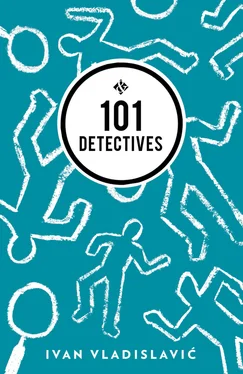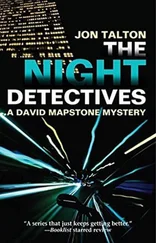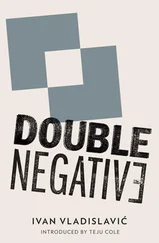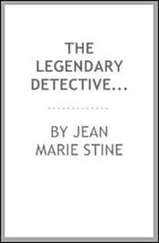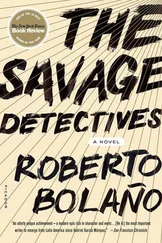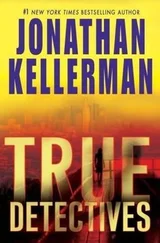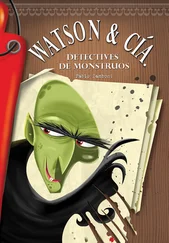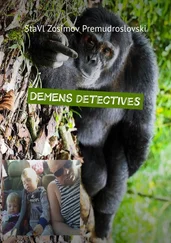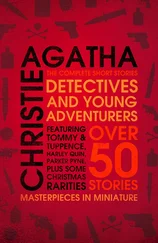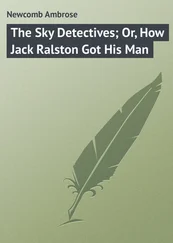Ivan Vladislavic - 101 Detectives
Здесь есть возможность читать онлайн «Ivan Vladislavic - 101 Detectives» весь текст электронной книги совершенно бесплатно (целиком полную версию без сокращений). В некоторых случаях можно слушать аудио, скачать через торрент в формате fb2 и присутствует краткое содержание. Год выпуска: 2015, Издательство: And Other Stories Publishing, Жанр: Современная проза, на английском языке. Описание произведения, (предисловие) а так же отзывы посетителей доступны на портале библиотеки ЛибКат.
- Название:101 Detectives
- Автор:
- Издательство:And Other Stories Publishing
- Жанр:
- Год:2015
- ISBN:нет данных
- Рейтинг книги:4 / 5. Голосов: 1
-
Избранное:Добавить в избранное
- Отзывы:
-
Ваша оценка:
- 80
- 1
- 2
- 3
- 4
- 5
101 Detectives: краткое содержание, описание и аннотация
Предлагаем к чтению аннотацию, описание, краткое содержание или предисловие (зависит от того, что написал сам автор книги «101 Detectives»). Если вы не нашли необходимую информацию о книге — напишите в комментариях, мы постараемся отыскать её.
and
, invites readers to do some detective work of their own. Each story can be read as a story, but many hide clues and patterns. Whether skewering extreme marketing techniques or constructing dystopian parallel universes, Vladislavic will make you look beyond appearances.
101 Detectives — читать онлайн бесплатно полную книгу (весь текст) целиком
Ниже представлен текст книги, разбитый по страницам. Система сохранения места последней прочитанной страницы, позволяет с удобством читать онлайн бесплатно книгу «101 Detectives», без необходимости каждый раз заново искать на чём Вы остановились. Поставьте закладку, и сможете в любой момент перейти на страницу, на которой закончили чтение.
Интервал:
Закладка:
I have also spent some time looking at other people looking at my painting. From my vantage point at the head of the conference table, I often see my colleagues’ eyes grow misty as they stray to the wall over my shoulder. I think I can say that Mountain Landscape is a compelling work, that it commands attention, and not just by its location in the scheme of things. The attention of my board members was not nearly as prone to wander when the wall was occupied by Mr Sexwale and his players.
Without meaning to, I see I have made two arguments in favour of my Pierneef. Let me introduce a third by saying that I cannot agree with Prof. Keyser on the painting’s style. I think it is the ‘style’ she refers to (you’ll correct me if I’m wrong) when she says that the painting has a ‘mannered, otherworldly quality’ and that it ‘denies the humanly specific in favour of a dehistoricised abstraction’. (My spellchecker does not approve of ‘dehistoricised’ but I’ve copied it down exactly.)
Just after Mountain Landscape was put back in the boardroom — the photograph of Tokyo is now on ‘permanent loan’ to the staff canteen — I had occasion to entertain Leo Mbola of Telkom. And the first thing he commented on was my painting. He said that he recognised the scene as part of the Winterberg range near Queenstown where he grew up. To Mr Mbola at least the painting captured a specific place rather than an abstract somewhere-or-other. He even offered to show it to me if I ever come down to Queenstown for a long weekend — and I might take him up on the offer. I know from the photocopies Claudia made me that Pierneef was fond of long, solitary trips in his car, simply taking the open road and stopping to paint whatever caught his fancy, but I have no idea whether he was ever in the vicinity of Queenstown. Is it important to know whether this mountain of his exists in the world? Would it change our appreciation of his art? I cannot say.
But I do wonder what kind of person Pierneef was. Did he strut about like a king or was he a simple man you would have walked straight past on the street? He certainly had a special way of seeing things. Perhaps he was a bit of a dreamer? Or a man of peculiar habits? On a business trip recently, I read something about Vincent van Gogh in one of those airline magazines. The name of the author would have come in useful now as a footnote. I suppose someone like Prof. Keyser is in the habit of storing up the bits and pieces one might need to argue the case for or against. There’s a lesson for me. Anyway, this article said that Van Gogh was a coffee addict. Apparently he used to drink twenty-four cups of coffee a day. Can you imagine! If I have so much as an espresso after lunch, I know I’ll be up half the night with my mind racing. Twenty-four cups! The journalist mentioned this fact in passing, as a mere curiosity, but I think it explains quite a lot about how Van Gogh saw the world, about his ‘style’. If you look at Starry Night , for instance, and imagine that you’ve had twenty-four cups of coffee since breakfast, it doesn’t seem so strange after all.
I am returning Prof. Keyser’s article to you with this letter. It is a photocopy of your photocopy, which means that the parts you highlighted in red for my benefit now appear as grey speckles, whereas my highlights are in green. I have made some notes about this and that, which I won’t go over here. But please look especially at the last page. Whereas you drew my attention to the point about ‘dispossession’, I wish to emphasise ‘the proprietorial gaze’, which occurs in the previous paragraph. This is the crux of the matter, I think.
Will you allow me one more anecdote? Last week, Eddie Khumbane of Spoornet dropped in to discuss some very interesting developments in the transport sector. We had met before in the conference environment, but this was his first visit to our HQ. It turns out he takes quite an interest in Pierneef — he had all the facts and figures you could ask for. So the two of us, rank amateurs but passionate ones, if I may say so, talked art when we should have been talking shop. You would be amused to know that he called Mountain Landscape a ‘prime piece of real estate’. He stood there with his hands behind his back, gazing at the painting as if he owned it, and not just the painting but the mountains themselves, the lofty reaches of the Winterberg. You would have thought he’d read Prof. Keyser’s article. If you could have seen him, I think you might agree that the impression made by Mountain Landscape is not at odds with our corporate culture.
All things considered, it seems to me that the Willie Bester street scene you had earmarked for the boardroom might be better suited to the lobby, the western wall I think, where it will catch every visitor’s eye, and for the time being I’ll keep the Pierneef here with me.
Sincerely,
(Signed) H.K. Khoza
PS According to Prof. Keyser, Pierneef could have learnt a thing or two from Joos de Momper. She says De Momper’s Great Mountain Landscape (1623), majestic though it is, has paths twisting through it, and on those paths are beggars, hermits, horses and dogs, and their presence makes all the difference. I cannot say whether she is right, because I haven’t seen the painting yet — I must still search for it on the internet. Have you come across this De Momper? He sounds like an Afrikaner, but as far as I know there were no Afrikaners in 1623.
Lullaby
I saw them at the airport, the woman and her young lover, but I would surely have forgotten them by now if everything had ended well. You know how it is: unhappy endings sharpen the memory. So many things snagged in my mind afterwards, details that would otherwise have slipped away in the torrent of experience that courses through each of us without leaving a trace. One of their suitcases had split during the flight and the baggage handlers had sealed it with yellow tape. It was an old-fashioned case, not the hard mussel-shell you’re advised to use these days, a battered brown-leather carryall stuck with labels showing palm trees and hula skirts, like something out of Casablanca . The boy, the young man, wrestled it off the clanking conveyor and they laughed about the tape: the chevrons made it look like the scene of a crime. Their second bag went by, a backpack full of zippered pockets, clips and slings, and he chased after it, squealing with laughter again, and nearly knocked me over. The suitcase must be hers and the backpack his: luggage and gear. Two styles of travelling, two versions of the world. He tugged a wisp of red from the gaping case and pinned it with hooked thumbs across his hipbones, a lacy thong, barely there, and she snatched it away, pretending to be embarrassed, and buried it in her shoulder bag. Quite a bit older than him, I thought, but young enough to show those slivers of belly and back between T-shirt and sarong. Half the passengers were in Hawaiian shirts and Bermudas, signalling that their island holiday had already begun. The couple sharing my row had ordered G&Ts for lunch. In my suit, even without a tie, I felt like a grown-up among the kids, and it was a relief to get out of the terminal and into a taxi.
My hotel was on the edge of Grand Baie. I knew the Coconut Palm well, a comfortable, touristy place close to a good beach and half a dozen restaurants. The exclusive resorts are more beautiful, but what’s the point when you’re on your own? Mr Appadoo at reception greeted me by name and asked how the new range was moving. Little touches like this make you feel at home, whereas chocolates on the pillow and the bedclothes turned down remind you that you’re not.
‘You must join us for sundowners at the Sandbar,’ Mr Appadoo said.
Читать дальшеИнтервал:
Закладка:
Похожие книги на «101 Detectives»
Представляем Вашему вниманию похожие книги на «101 Detectives» списком для выбора. Мы отобрали схожую по названию и смыслу литературу в надежде предоставить читателям больше вариантов отыскать новые, интересные, ещё непрочитанные произведения.
Обсуждение, отзывы о книге «101 Detectives» и просто собственные мнения читателей. Оставьте ваши комментарии, напишите, что Вы думаете о произведении, его смысле или главных героях. Укажите что конкретно понравилось, а что нет, и почему Вы так считаете.
